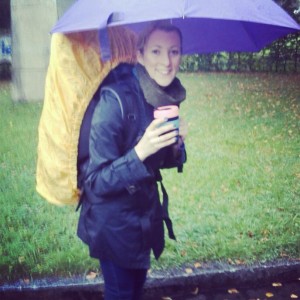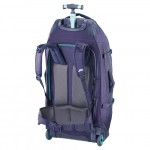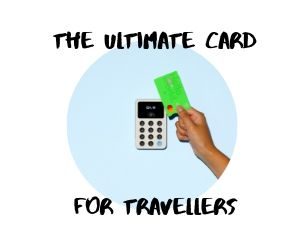
Backpacks are like underwear-a necessary item to wear that requires a little bit of thought and consideration to ensure maximum comfort and durability. Comfort and suitability are paramount to me when deciding which pack I’ll be imitating a turtle with. So like underwear the wrong size can cause you a lot of grief. Too big and you’re carrying extra weight and flapping around. Too small and there are bits hanging off the edges.
There’s a lot of information out there and some very varied views from sales staff on which is the best pack for you. So before you venture into the big wide world of Outdoor Store Retail and spend money on something that you didn’t need, here are a few things to consider and ask questions about;
- Trip length—A sneaky overnighter, a weekend away with friends or an amazing trip that lasts for a week or more?
- Weather– What season are you traveling in? Warm, waterproof items tend to be big and bulky.
- Personal style—are you more into comfort or weight savings? Is your gear old and bulky or weight- and space-efficient?
- Body type—your torso length, not your height, matters most.
Now the below is a very general guide for which pack sizes (measured in liters) typically work well during warm-weather adventures of varying lengths. Colder-weather trips usually require a larger pack, especially if you are carrying sleeping bags, down jackets etc. The below assumes that you aren’t trekking around in a private car and perhaps need to use public transport, planes, buses and a fair amount of walking in between.
Weekender– 1-3 nights in total
Pack capacity 30-50ltrs
Multi-day– 3-5 nights
Pack capacity 50-80ltrs
Extended adventure– 5 days and more
Pack capacity- 70ltrs +
*Note that if you are off backing packing for an extended trip that a lot of these backpacks which list at 60ltrs usually comes with an additional day bag. These day bags generally look fairly dorky but are actually quite invaluable. They easily fit a days worth of snacks, water bottle and a jumper for trekking around towns and make great carry on luggage if you are flying.
Backpack Features
So stepping back you might be confused as to what the backpack features actually are.
Main compartment access:
- Top-loading openings are pretty standard and easy to find.
- Some packs also offer a zippered front panel that folds open exposing the full interior of the pack, or a side zipper, which also makes it easier to reach items deeper in your pack. (These are my preferred style of bag and I hate getting lost head first into a bag)
Sleeping bag compartment: This is a zippered stash spot near the bottom of a pack. Some people find this area great for storing sleeping gear or other gear that you’d like to reach easily. If we have this area zipped up
Top lid: Many packs offer a zippered top lid where you can easily store quick-access items. Like snacks.
Pockets: Typical offerings:
- Elasticized side pockets: They lie flat when empty, but stretch out to hold a water bottle, tent poles or other loose objects.
- Hipbelt pockets: These accommodate small items you want to reach quickly—a smartphone, snacks, more snacks.
- Front pocket(s): Sometimes added to the exterior of a shovel pocket, these can hold smaller, less bulky items.
Ventilation: A few packs have engineered a suspended mesh back panel, sometimes called “tension-mesh suspension.” This is a trampoline-like design where the frame-supported packbag rides along a few inches away from your back, which instead rests against the highly breathable mesh. Woo hoo no sweaty back.
Padding: Padding around the hipbelt and lumbar pad, to help prevent sore spots on your hips and lower back.
Lockable Zips: These are just two zippers so you can lock them together. Safety first!
Raincover: Pack fabric interiors are usually treated with a waterproof coating. Yet packs have seams and zippers where water can seep through, and the fabric’s exterior absorbs some water weight during a downpour. Some packs come complete with their own protection.
.
 Back pack complete with built in rain coat, harness and happiness.
Back pack complete with built in rain coat, harness and happiness.
Standard or Hybrid?
In the past few years we’ve seen the rise of flashpacking and a combination of the suitcase/back pack traveller. The hybrid is essentially a trolley case that has a backpack harness and capability.
Price wise these can still be around the $300+ mark.
How much should I spend?
How long is that piece of string you are wanting to avoid? If you’re shopping in Australia you can expect to pay around $200 for an entry level backpack and around $350-400 for a more reliable steady bag. Just remember if you are shopping at one of the big retailers try not to pay full price, as their annual, regular sales can see you pay a more realistic price at upwards of 50% off.
Places we love and trust-
www.backpackinglight.com.au
www.wildearth.com.au
www.paddypalin.com.au
www.rei.com
Next we’ll be talking about how to fit your new backpack and then how to pack it.









